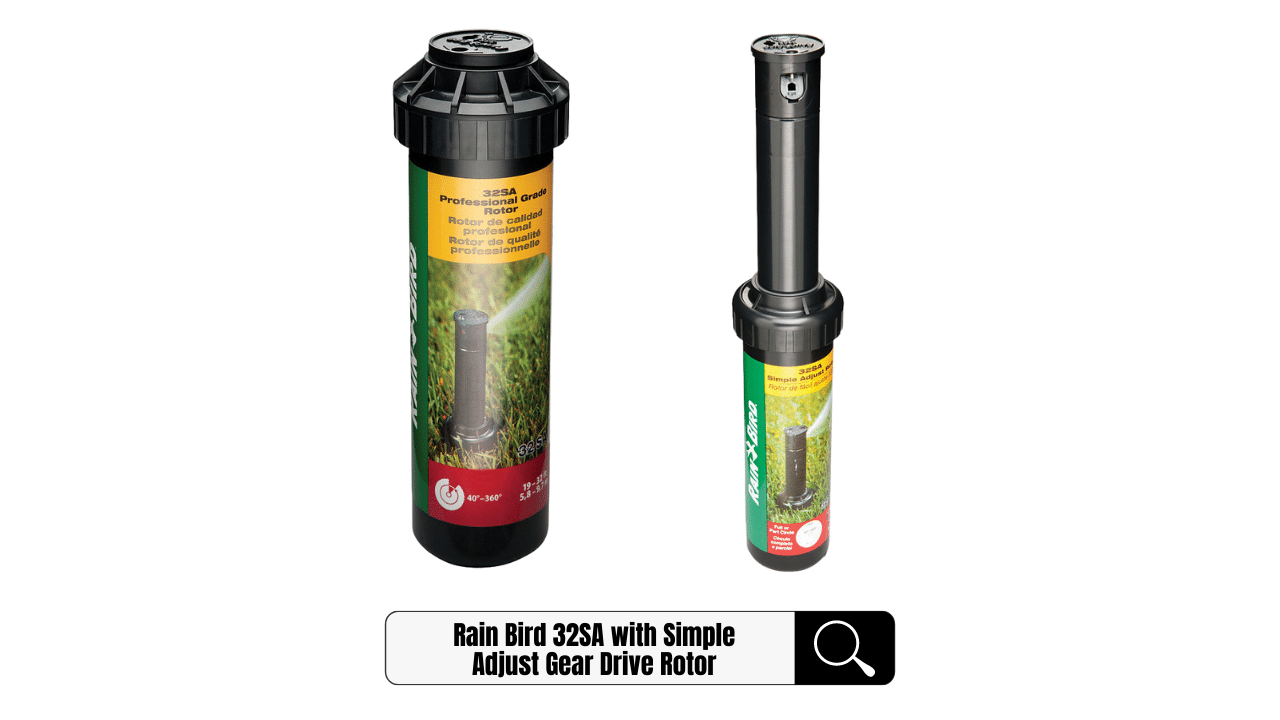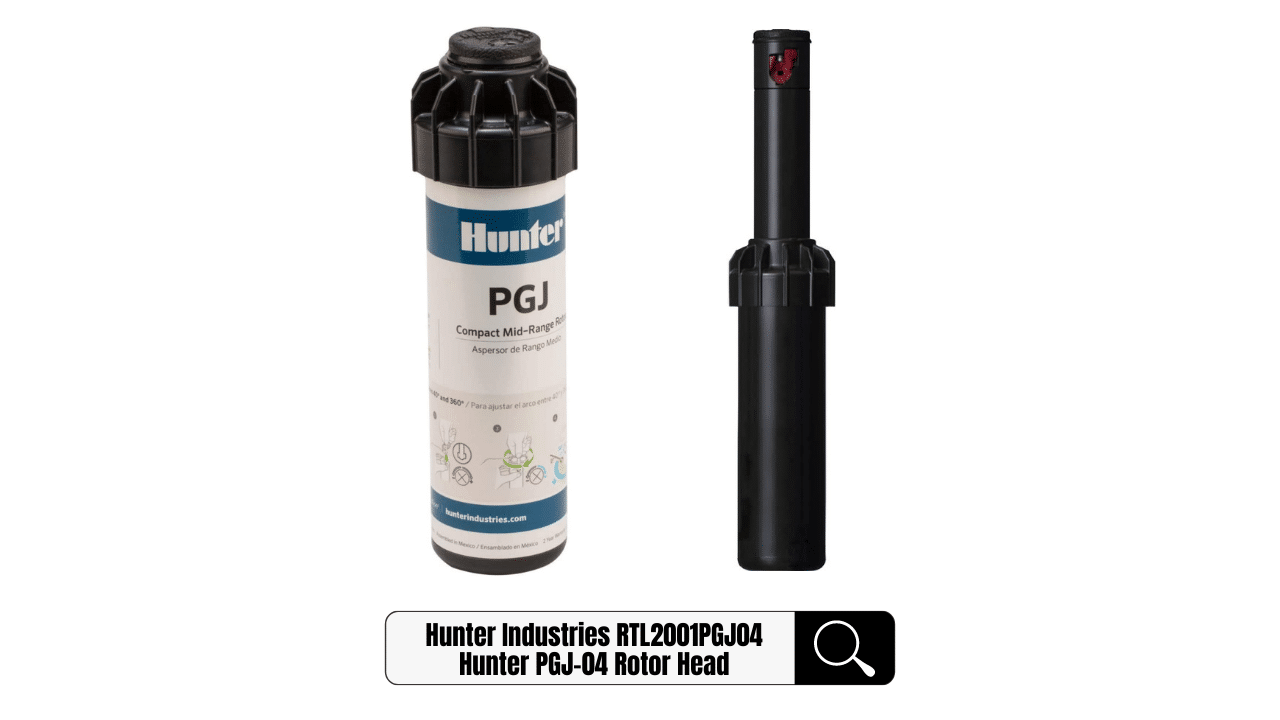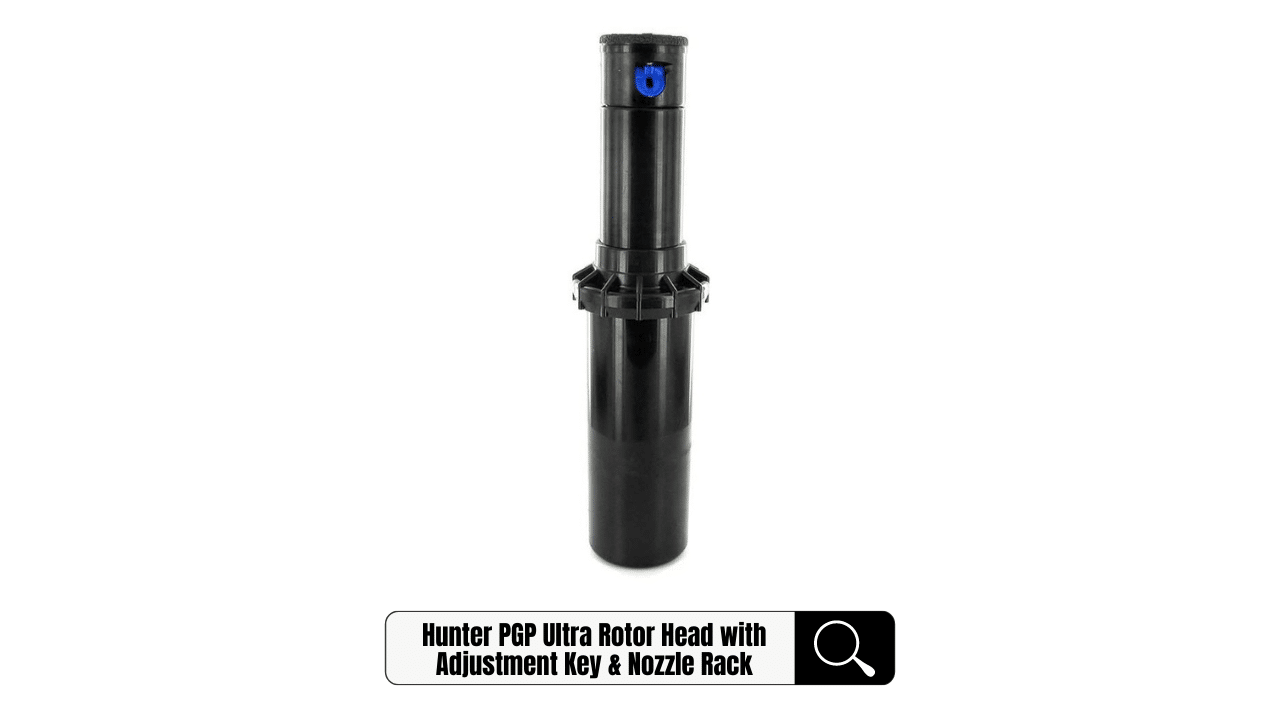Picking the right rotor sprinkler head for your yard demands commitment and time on your end. It would be best to have a solid grasp of landscaping and irrigation for starters, but it doesn’t mean you’ll need to master it all at one sitting.
That said, we’re here to discuss the fundamentals so you can make an informed decision in buying your rotor sprinkler head. (Related: 7 Types of Sprinkler Heads (Pros, Cons & Everything You Need to Know))
What is a Rotor Sprinkler Head?
Rotor sprinkler heads are suitable for medium to large-sized lawns with an irrigation system of 30+ PSI. Ideally, the distance between each rotary head placement is lesser than the PSI supplied in each.
Here’s a good rule of thumb to follow (Styker’s Rule): Where the rotor head’s water pressure (PSI) must be more than the distance (in feet) between the heads.
For instance, if you want to place rotors 35 feet apart, it’s best to have 35 PSI of pressure at its sprinkler head. At a minimum, you’ll need about 45 PSI to operate the sprinkler system. Standard residential 3/4″ inlet rotors work well at 25 to 35 feet of spacings.
Rotor heads are ideal for slow-draining soils and slopes, given that they slowly deliver more water than their spray head counterparts. This ensures less runoff, waste water, or no spray wind drift.
The term “rotor” generally describes different sprinklers that operate through rotating water streams in a continuous circular motion. Most homeowners are likely familiar with the impact rotor sprinkler, commonly called a Rainbird.
Important note: Rain Bird is a sprinkler company specializing in different sprinkler heads and impact rotors.
Key Considerations in Selecting the Right Rotor Sprinkler Head
If you’re still torn between choosing rotor sprinkler heads (or other counterparts) for your yard, here are some general guidelines to keep in mind.
Now, there are still plenty of considerations left, so let’s take a closer look at all of them.
Water Pressure
Rotor sprinkler heads typically need more water pressure than the distance between each rotator. So, if they are situated 45 feet apart, this will be around 55 PSI. Homeowners with a water pressure weaker than 40 PSI can consider rotary nozzles. These are designed to cover large areas adequately.
Area Shape
For extensive and lengthy lawns, the far-reaching rotor heads can be a great option to consider. Rotary nozzles will also do the job with little yards (12 to 28 feet wide). Their wider water spray radius (15 to 35 feet) is suitable for small areas.
Landscaping
It’s always ideal to consider your current landscape shape (all the curves and edges) in planning your irrigation system. If you need to keep the sprayed water contained, rotary nozzles prove the better option. This will help you limit any damage brought by water.
How does a Standard Gear-Drive Rotor Work?
To clarify how rotor sprinkler heads function, it starts with water entering the sprinkler base before passing through the filter screen and turbine. As the water turns the turbine accordingly, a set of gears is powered to rotate the nozzle. Once the water passes through the body, it can find its way out through the nozzle.
In most cases, nozzles can be easily removed with a wide range of available nozzle sizes you can choose from. You’ll also find a radius reduction screw at the nozzle– which doubles as the set screw that holds it firmly in place.
The Best Rotor Sprinkler Heads
Now, if you’re 100% confident in using rotor sprinkler heads for your yard, we’ve rounded up our top picks for your consideration!

This Rain Bird rotor is a classic. If you live in a large-sized property that needs rotary sprinklers, this product may just be what you need. Notably, the sprinkler itself is designed with excellent uniformity. Its rain curtain pattern also gives you a consistent arch.
Pros:
Cons:

This PGJ rotor sprinkler by Hunter is a crowd-favorite, thanks to its durability and reliability. That said, you can count on professional performance in this product.
Pros:
Cons:

If you’re looking to cover large areas, you will need a rotor sprinkler head to handle the high output. Fortunately, this Hunter PGP product offers a robust design on a ¾ inch inlet. We recommend it to homeowners looking for the maximum coverage possible.
Pros:
Expert-Backed Tips on What to Look for in a Good Quality Rotor Sprinkler Head
We had the chance to consult a local lawn and landscape specialist on some fool-proof tips to keep in mind when shopping for a rotor sprinkler head. For your convenience, we’ve compiled them in a list below.
Frequently Asked Questions (FAQs)
Can rotating sprinkler nozzles save water?
Up to 20% less water will be used with a rotating sprinkler nozzle than a standard sprinkler head because it distributes water evenly and slowly to the landscape. Not only that, but it also maintains your plants’ health in the process. The water from these nozzles is less likely to mist and be misdirected by the wind. As such, this decreases the chance of runoff onto sidewalks and streets.
Where can I purchase rotating sprinkler nozzles?
You can purchase a rotating sprinkler nozzle from a local irrigation supply store, your local landscape contractor, or directly from the manufacturer. Common retail locations also offer some models of these nozzles.
What situations work best with rotor-type sprinkler heads?
Rotors are typically used for sprinkler spacings from 18 to 55 ft apart. Some available rotors can be spaced closer than 18ft. However, they are usually not cost-effective because a spray sprinkler will function well and cost well in an ideal spacing.
